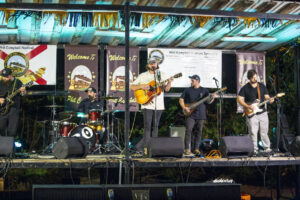Woods that make a perfect fire
By By Steve Strong / area horticulture extension agent
Oct. 29, 2003
Nothing chases away the winter chill like the warmth and smoke of a good wood fire.
Traveling to the country on weekends with the family to chop and haul firewood is one of my favorite childhood memories, and there is still something magical about setting that first spark of the holiday season.
My brother and I learned the value of hard sweaty work with an ax and saw, and were rewarded on many frosty nights with roasted marshmallows and toasted cheeks. When the power went out during winter storms, the fireplace often took on its original "pioneering" purpose as the cooking stove for family meals.
Man's fascination with fire stems back to primal days, when hunting and gathering wood to heat the cave or cabin was as much a part of survival as finding food. Fire may be less of a daily necessity than it used to be, but its aromatic and therapeutic thermal properties still make it a favorite treatment for soothing stressed nerves and sore muscles.
Wood fire is a five-senses experience, providing an eye-dazzling glow, and a snap-crackle-pop soundtrack that warms your nose while leaving that smoky, acrid flavor in the back of your throat.
Whether the occasion is a Halloween bonfire to chase off evil spirits and "haints," or a gathering around the hearth for a traditional family holiday celebration, this is the season to get fired up while you're getting jolly.
How to choose
Hardwoods provide the best heat value as firewood, with the top-rated hickory (pecan is also a hickory cousin) followed by red and white oaks, maple, cherry, blackgum or tupelo, and sycamore. Other hardwoods include beech, white ash, and various types of birches that may not be common in the Deep South.
Many species are now more prized for their furniture qualities rather than for fuel, too.
Softwoods also make a great fire. But, be careful to limit the amount of pine and other conifer wood that is burned in a standard home fireplace. Starter wood, also called kindling or "fatwood," usually contains a high resin content in the sap (i.e. pine knots), and can cause a dangerous creosote build-up in a chimney that could result in a hazardous flue fire.
Red cedar is another available softwood with good heating value, but like hickory hardwood it emits frequent showers of sparks, so be sure to keep the fire screen in safely in place. Avoid using elm or poplar for firewood altogether, as they both tend to result in a disappointing smoldering mess.
For the wood-burning holiday chef, don't forget about fruitwood like apple and pear to add a special sweet, smoky bite to a Thanksgiving turkey or venison hindquarter.
Keep in mind that most timber will require some amount of curing before it dries out enough to become quality firewood using moist, green branches of hickory or fruitwood for smoke rather than flame can be an advantage in slow cooking, though.
Recycle, be careful
After wood is burned, the ash that remains contains high amounts of the element potassium that can be recycled as organic fertilizer for the home lawn, garden or fruit orchard.
Use a maximum amount of 25 pounds of "potash" per 1000 square feet of space to prevent alkalinity burn, and to protect plant foliage, fruit, and roots make sure to apply only during the dormant season.
Please follow careful safety precautions when harvesting your own firewood, and be sure to wear gloves, eye protection, and maybe even a safety helmet. Have saw equipment checked by a professional each season before using, and the same goes for the fireplace chimney.
Fires and the wood that fuels them are wondrous things, but it takes a proper show of respect for our natural resources and a desire to play it safe to enjoy wood fires for a lifetime.










